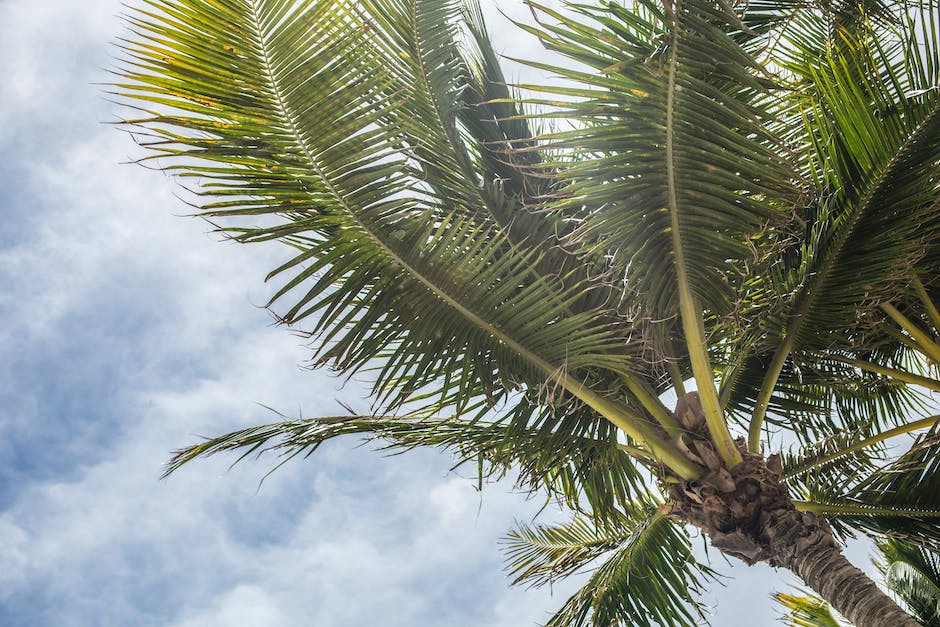Introduction
The Florida citrus industry has been severely impacted by a combination of hurricanes and insect infestations, resulting in a significant reduction of the citrus crop by 60%. These natural disasters have caused extensive damage to citrus groves, leading to a slow and challenging process of rebuilding for Florida’s citrus growers. The devastation caused by hurricanes and the relentless attacks from insects have dealt a major blow to the state’s citrus industry, requiring substantial efforts to recover and restore the once-thriving citrus crop.
Impact of Hurricanes and Insects on Florida Citrus Crop

Florida, the Sunshine State, is known for its beautiful beaches, vibrant nightlife, and of course, its delicious citrus fruits. But recently, the state has been facing some serious challenges when it comes to its citrus crop. Hurricanes and pesky insects have teamed up to slash the Florida citrus crop by a whopping 60%. Talk about a double whammy!
Let’s start with the hurricanes. These powerful storms have been wreaking havoc on Florida’s citrus industry for years. With their strong winds and heavy rains, hurricanes can easily uproot trees and damage the delicate fruit. It’s like Mother Nature’s version of a fruit salad, but without the tasty dressing. And let’s not forget about the flooding that often accompanies these storms. Citrus trees don’t like to have their feet wet, and excessive water can drown their roots, leading to a decline in fruit production. It’s like trying to swim with a ball and chain – not an easy task!
But as if hurricanes weren’t enough, Florida’s citrus farmers also have to deal with a tiny but mighty enemy – insects. These little critters have a voracious appetite for citrus trees, and they’re not afraid to show it. From the Asian citrus psyllid to the citrus blackfly, these insects have been chomping away at Florida’s citrus crop like it’s an all-you-can-eat buffet. It’s like having a never-ending pest problem – the kind that even the best exterminator can’t handle.
So, what does all of this mean for Florida’s citrus industry? Well, it’s not looking too good. With a 60% reduction in the citrus crop, farmers are feeling the squeeze. And let’s not forget about the ripple effect this has on the economy. Less citrus means fewer jobs, less revenue, and a whole lot of sour faces. It’s like a bad episode of “The Real Housewives of Florida” – drama, drama, drama!
But fear not, my citrus-loving friends, because there is a silver lining to this cloudy situation. Florida’s citrus farmers are a resilient bunch, and they’re not about to let a couple of hurricanes and insects get the best of them. They’re rolling up their sleeves, putting on their thinking caps, and coming up with innovative solutions to protect their precious citrus trees. From using natural predators to control insect populations to implementing new irrigation techniques to combat flooding, these farmers are determined to bounce back. It’s like watching a superhero movie – you can’t help but root for the underdog!
And let’s not forget about the power of community. Floridians are known for their strong sense of camaraderie, and when it comes to supporting their local citrus farmers, they’re not holding back. From buying more citrus products to spreading the word about the challenges facing the industry, the people of Florida are rallying together to help their beloved citrus crop make a comeback. It’s like a big group hug – warm, fuzzy, and full of love.
So, while the Florida citrus crop may have taken a hit from hurricanes and insects, it’s not down for the count just yet. With the determination of its farmers and the support of its community, this Sunshine State staple is sure to rise again. And when it does, we’ll all be able to enjoy that sweet, tangy taste of Florida citrus once more. It’s like a ray of sunshine on a cloudy day – a reminder that even in the face of adversity, there’s always hope.
Slow Rebuilding Process for Florida Citrus Industry
Florida Citrus Crop Slashed by 60% due to Hurricanes and Insects
Florida, the Sunshine State, is known for its beautiful beaches, vibrant nightlife, and of course, its delicious citrus fruits. But in recent years, the state’s citrus industry has been hit hard by a series of hurricanes and pesky insects, leaving farmers and consumers alike in a bit of a pickle. With a whopping 60% reduction in the citrus crop, the slow rebuilding process for the Florida citrus industry is no laughing matter. Well, maybe just a little.
Let’s start with the hurricanes. These powerful storms have wreaked havoc on Florida’s citrus groves, uprooting trees, flooding fields, and leaving a trail of destruction in their wake. It’s like Mother Nature decided to throw a temper tantrum and take it out on our beloved oranges and grapefruits. And let me tell you, she did a pretty good job.
But as if hurricanes weren’t enough, the citrus industry has also had to deal with an army of tiny, yet mighty, insects. These little critters, known as citrus greening disease, have been feasting on our citrus trees like it’s an all-you-can-eat buffet. They suck the life out of the trees, leaving them weak and vulnerable. It’s like a horror movie, but instead of zombies, we have bugs. And trust me, it’s not nearly as entertaining.
So, with hurricanes and insects teaming up against them, Florida’s citrus farmers have had to roll up their sleeves and get to work. But rebuilding the citrus industry is no easy task. It’s like trying to put together a jigsaw puzzle without all the pieces. You have to be patient, persistent, and maybe a little bit crazy to take on such a challenge. But hey, that’s what makes us Floridians so special.
The first step in the slow rebuilding process is replanting. Farmers have had to replace the trees that were lost in the hurricanes and those that were infected by the pesky insects. It’s like starting from scratch, but with a lot more dirt under your fingernails. And let me tell you, digging holes for all those trees is no walk in the park. It’s more like a full-body workout. Who needs a gym membership when you have a citrus grove?
Once the new trees are in the ground, it’s a waiting game. You see, citrus trees take time to grow and bear fruit. It’s not like planting a beanstalk and waking up to a giant beanstalk the next morning. No, it takes years of nurturing, pruning, and maybe a little bit of talking to your trees to get them to produce those juicy oranges and tangy grapefruits we all love. It’s like raising a child, but without the tantrums and teenage angst. Well, at least most of the time.
And let’s not forget about the constant battle against those pesky insects. Farmers have had to come up with creative ways to protect their trees from these tiny invaders. From using natural predators to spraying organic insecticides, they’ve tried it all. It’s like a never-ending game of cat and mouse, but instead of a cat, you have a farmer armed with a sprayer. It’s a sight to behold, let me tell you.
So, as you can see, the slow rebuilding process for the Florida citrus industry is no joke. It’s a challenging, yet necessary, journey that requires patience, perseverance, and a good sense of humor. Because sometimes, all you can do is laugh in the face of adversity. And maybe have a glass of freshly squeezed orange juice while you’re at it. After all, laughter is the best medicine, and citrus fruits are the best way to get your daily dose of Vitamin C.
Challenges Faced in Rebuilding Florida Citrus Crop after Hurricanes and Insects
Florida, the Sunshine State, known for its beautiful beaches, vibrant nightlife, and of course, its delicious citrus fruits. But recently, the state has been facing some challenges in rebuilding its once-thriving citrus crop. Hurricanes and pesky insects have wreaked havoc on the industry, slashing the crop by a whopping 60%. It’s a slow rebuilding process, but hey, at least we can still enjoy our orange juice with a side of humor!
Let’s start with the hurricanes. These powerful storms have been hitting Florida with a vengeance, leaving a trail of destruction in their wake. The citrus groves, once lush and green, now resemble a scene from a post-apocalyptic movie. Trees uprooted, fruits scattered everywhere, it’s like Mother Nature decided to play a game of fruit bowling. Talk about a strike against the citrus industry!
But it’s not just the hurricanes that have been causing trouble. Oh no, we have some tiny villains to deal with too – insects. These little critters have been feasting on our precious citrus fruits, leaving behind nothing but empty peels. It’s like they have a personal vendetta against our oranges. Maybe they’re jealous of their vibrant color or their sweet, tangy taste. Who knows? All we know is that these insects are not to be messed with.
So, what are the challenges faced in rebuilding the Florida citrus crop after these disasters? Well, for starters, it’s a slow process. You can’t just snap your fingers and magically have a thriving citrus grove. It takes time, patience, and a whole lot of hard work. Farmers have to replant the trees, nurture them, and wait for them to grow. It’s like watching a pot of water boil – it feels like it’s taking forever!
And let’s not forget about the financial aspect. Rebuilding a citrus crop is no cheap endeavor. It requires a significant investment of money, resources, and manpower. Farmers have to dig deep into their pockets to cover the costs of replanting, pest control, and everything else that comes with rebuilding. It’s like playing a never-ending game of Monopoly, except instead of buying properties, you’re buying trees. And instead of collecting rent, you’re hoping for a bountiful harvest.
But despite all the challenges, there is a glimmer of hope on the horizon. The Florida citrus industry is resilient, like a phoenix rising from the ashes. Farmers are coming up with innovative solutions to combat the pests and protect their crops. They’re using natural predators, like ladybugs and praying mantises, to keep the insect population in check. It’s like a tiny army of superheroes fighting off the evil bugs. Go, team citrus!
Additionally, scientists and researchers are working tirelessly to develop new varieties of citrus that are resistant to pests and diseases. They’re like mad scientists in a lab, mixing and matching genes to create the ultimate citrus superhero. Who knows, maybe one day we’ll have oranges that can fly or lemons that can shoot laser beams. Okay, maybe that’s a bit far-fetched, but you get the idea.
In conclusion, the challenges faced in rebuilding the Florida citrus crop after hurricanes and insects are no joke. It’s a slow process that requires time, money, and a whole lot of hard work. But with the resilience of the citrus industry and the determination of farmers, we can be hopeful for a brighter, juicier future. So, let’s raise a glass of orange juice and toast to the slow rebuilding of Florida’s citrus crop. Cheers!
Conclusion
In conclusion, the Florida citrus crop has been severely impacted by hurricanes and insects, resulting in a significant reduction of 60%. The slow rebuilding process is expected due to the extensive damage caused by these natural disasters and pests.


